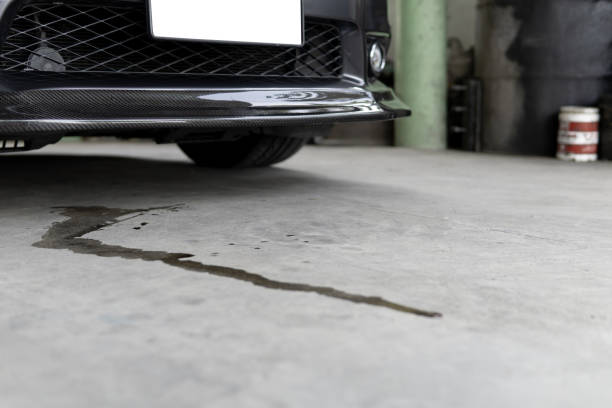From roads and sidewalks to other building projects, concrete is a fantastic and robust material that is ideal for your next project! One drawback of concrete, meantime, is that it is porous and easily stained by grease.
Particularly if ignored for a long time, these stains can be difficult to get rid of and look bad. Thankfully, there are multiple successful ways to get oil stains off of concrete.
Contents
The Process of Removing Oil Stains from Concrete?
Do unattractive oil stains on your garage floor or concrete driveway irritate you? In such case, you are undoubtedly not alone yourself.
Any concrete surface can be swiftly and difficultly ruined by unsightly oil stains. But happily, there are a few easy fixes you can do to remove those ugly oil stains and maintain the finest possible appearance for your concrete.
We’ll go over some of the easiest and most useful methods to get oil stains off concrete in this blog post so your surfaces always seem clean and nice. Though oil stains might take on any form or size, don’t let that scare you!
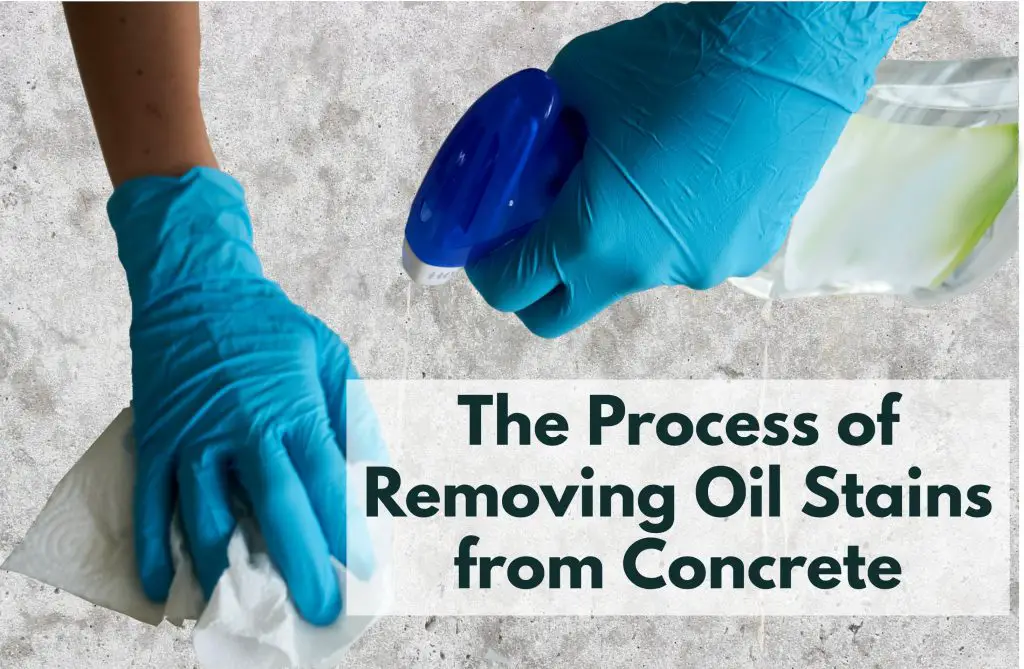
The size and age of the stain will provide the key to getting rid of it quickly and easily. So what are you waiting for, let’s get started!
Removing Fresh Oil Stains
Finding the right approach to tackle oil stains on concrete may take a bit of experimentation – but the end result will be worth it! However, when it comes to fresh oil stains, the process of removing them from concrete is absolutely basic.
Here’s the process of removing oil stains from concrete:
Absorb the Oil with Effective Materials
The initial step in tackling fresh oil stains is to maximize the absorption of the oil. For this purpose, materials like rags, kitty litter, or sawdust are highly effective. Simply cover the oil stain with your chosen absorbent material and allow it to sit for several hours. This method helps to soak up the oil, preparing the surface for further cleaning treatments.
Utilize Baking Soda for Deeper Cleaning
Beyond its use in baking, baking soda is an excellent cleaner that works especially well on concrete stains from oil. Its alkaline character enables it to disintegrate oil molecules’ molecular bonds and neutralize acids. This breakdown facilitates simpler washing away of the oil. Furthermore helping to eliminate oil and other liquids from surfaces is the great absorbency of baking soda.
Scrub the Stain with Dish Soap
Once the oil has been absorbed, it’s time to scrub the stain. Using a scrub brush and dish soap, work on the stained area. Dish soap excels in breaking down oil, facilitating its removal from concrete surfaces. The soap works by emulsifying the oil when mixed with warm water, allowing for effective penetration and breakdown of grease and oil without harming the concrete.
Pressure Washing for Stubborn Stains
For persistent oil stains, a pressure washer may be necessary. This powerful tool can effectively blast away stubborn residues from concrete surfaces. When using a pressure washer, it’s crucial to select the correct pressure level and nozzle setting to ensure the concrete is not damaged while achieving a thorough clean. Rinse the area thoroughly with water after pressure washing to remove any remaining debris and cleaning solutions.
It’s vital to remove fresh oil stains as soon as possible to prevent them from seeping deeper into the concrete and causing permanent damage.
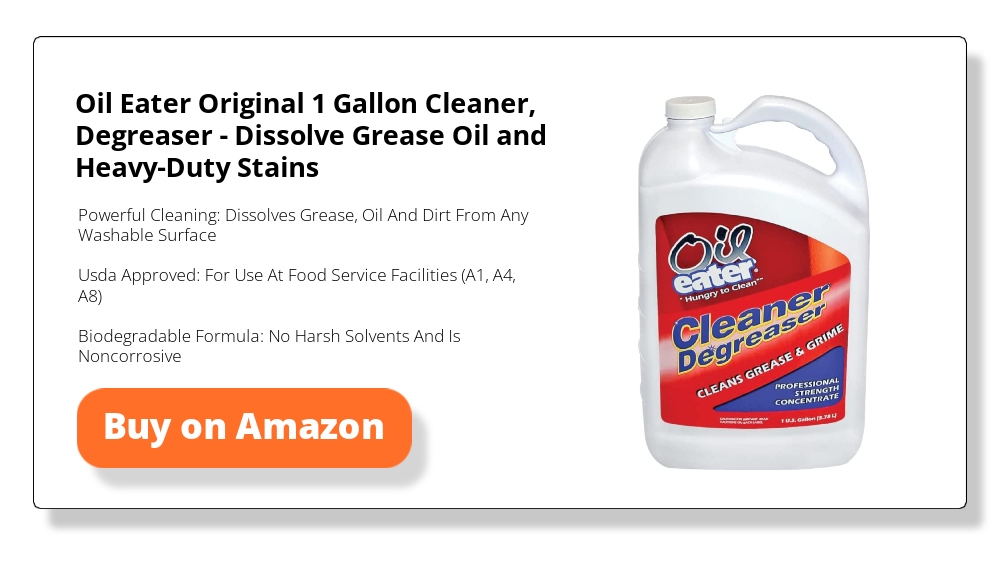
Small Spots or Oil Spills
In some cases, it’s possible to remove small spills or spots on a surface with minimal effort and just a few household items. A strong detergent, a scrub brush, and a sponge can often do the trick.
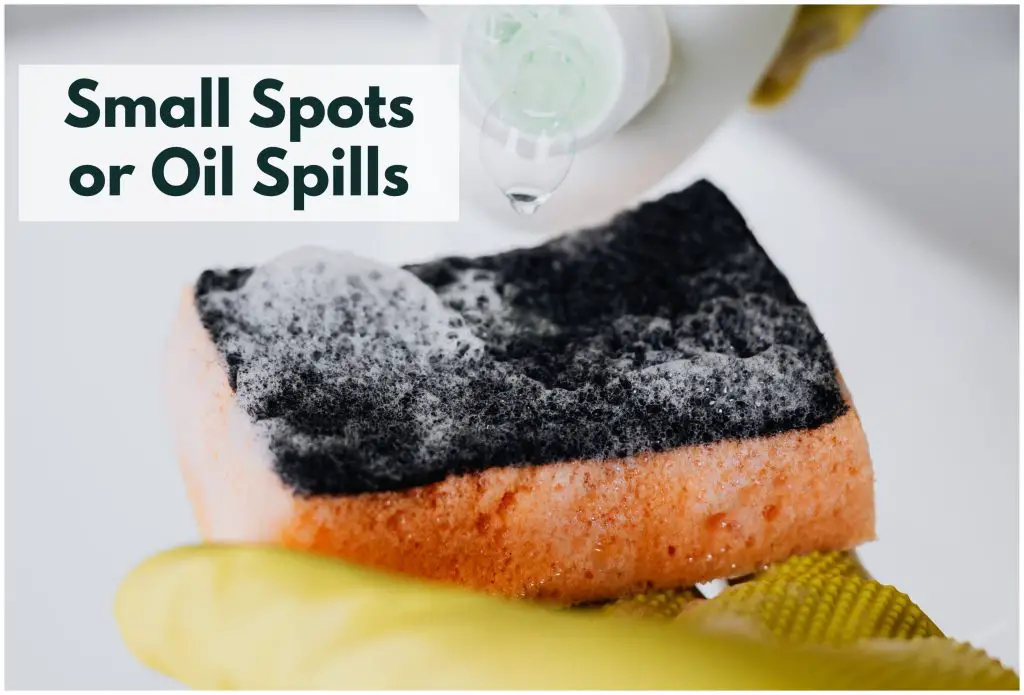
To remove a small spill or spot, start by applying the detergent directly onto the affected area. Use the scrub brush to agitate the detergent and break up any stains or dirt. Use a sponge or cloth to wipe away the detergent and rinse the area with water. If the stain persists, repeat the process until it’s removed.
It’s important to note that this method is most effective on fresh stains or spills that haven’t had time to set into the surface. If the stain has been there for a while or is particularly stubborn, additional cleaning methods may be required.
Removing Old Oil Stains
If you have an old oil stain on your concrete that has been sitting for a while, you may be wondering if it’s possible to remove it. While it can be more challenging than removing fresh oil stains, there are still several steps you can take to try and remove the stain.
Over time, the oil seeps deep into the concrete, making it more difficult to remove. However, there are still some steps you can take to try and remove the old oil stain.
- Clean the Area
- It is essential to begin by cleaning the area around the oil stain if you wish to remove it.
- Sweeping away any loose dirt and debris is a great way to start, as this will make it easier to identify the exact location of the oil stain.
- Washing them off with a strong cleaning solution and scrubbing them thoroughly with a brush will help lessen the oil stain.
- It is also recommended to use a pressure washer to help remove any surface-level oil or grime.
- Pressure washing can help to break down and loosen the oil from its position, allowing for more effective stain removal.
- By taking the time to properly clean the area before tackling the stain, you can ensure the most effective cleaning process possible.
- Use a Degreaser in Removing Oil Stains From Concrete
- A more aggressive approach to removing oil stains from concrete surfaces is to use a commercial concrete cleaner or degreaser!
- This type of detergent is a concentrated alkaline soap that is scrubbed into the concrete surface. It’s a great way to get rid of tough stains and is perfect for outdoor surfaces.
- Not only will this cleaner help to remove ingrained dirt and grime, but it’s also effective for removing oil and grease.
- Don’t be put off by its strength – used correctly, it will help to make your concrete surfaces look like new again.
- Allow the degreaser to sit for several hours, or overnight, to give it time to penetrate the oil and break it down.
- Scrub the area with a stiff brush and rinse thoroughly with water.
- Apply a poultice
- If you’ve tried using a degreaser or enzyme cleaner and find that the oil stain is still visible on your concrete surface, a poultice treatment may be worth considering. A poultice can help to draw out any remaining oil from the concrete.
- To create a poultice, saturate an absorptive material with a strong solvent.
- You can mix a poultice made of baking soda, water, and powdered laundry detergent until it forms a thick paste.
- Spread the material over the stain, cover it with plastic, and let the process of osmosis do the job.
- Over time, the solvent will break down the oil and the absorptive material will suck it out of the concrete.
- While a poultice can be effective at removing stubborn oil stains, it’s important to note that this process can be time-consuming and may not be practical for larger stains. It’s also important to handle the solvents with care and to follow appropriate safety precautions.
- Ocean Microbes in Removing Oil Stains From Concrete
- Recent studies have shown that ocean microbes can be used in removing oil stains from concrete surfaces effectively.
- These microbes are tiny living organisms that thrive in aquatic environments, and they have the remarkable ability to break down hydrocarbons, which are the main components of oil.
- The process of using ocean microbes to remove oil stains from concrete involves applying a solution that contains these microorganisms directly onto the affected area.
- The microbes then feed on the oil, breaking it down into harmless byproducts such as water and carbon dioxide.
- This method of removing oil stains from concrete is not only effective but also environmentally friendly, as it does not involve the use of harsh chemicals or solvents that can be harmful to the environment.
- It is a cost-effective solution that can be applied quickly and easily, making it an attractive option for homeowners and businesses alike.
If you’re not comfortable using solvents or if the stain is too large or stubborn for a poultice treatment, it may be best to hire a professional to remove the stain. Professional concrete cleaners are well-equipped and experienced in dealing with difficult stains.
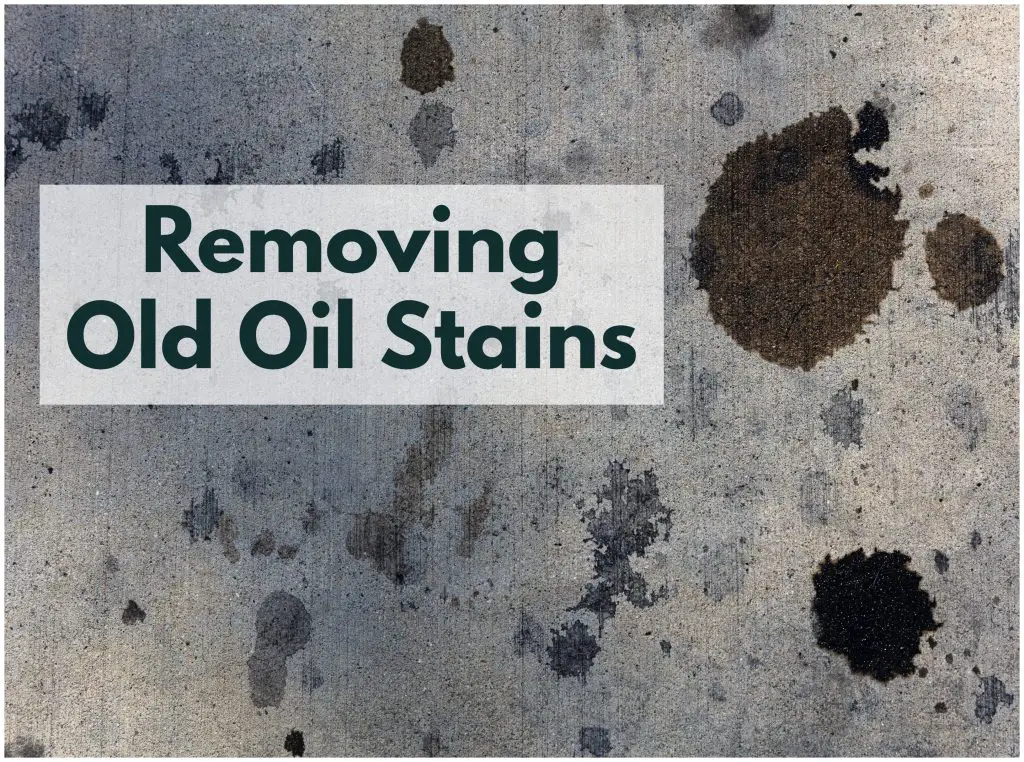
Their equipment is designed to remove the stain without damaging the concrete. Professionals also have access to special cleaning agents that are specifically designed for concrete. These are much more effective than conventional household cleaners, and they are much safer for concrete.
Professional cleaners also know the proper techniques to use when removing the stain. This ensures that the stain is safely and effectively removed without causing any damage.
Conclusion
Oil stains on concrete surfaces can be a persistent and frustrating problem, as they are notoriously difficult to remove. However, with the right equipment and knowledge, anyone can successfully remove oil stains from concrete and restore its appearance.
Not only will this improve the aesthetics of your property, but it will also help to prolong the life of your concrete surfaces, saving you money in the long run.
In some cases, a combination of both methods may be necessary in removing oil stains from concrete surfaces. It is important to be patient and persistent when attempting to remove oil stains, as it may take several attempts to achieve the desired results.
Although it may be tempting to use harsh chemicals like bleach to eliminate oil stains from concrete, it is important to keep in mind that doing so could potentially result in discolouration or damage to the surface.
We have more cleaning guides for your home. Check out our guide on rug cleaning!

